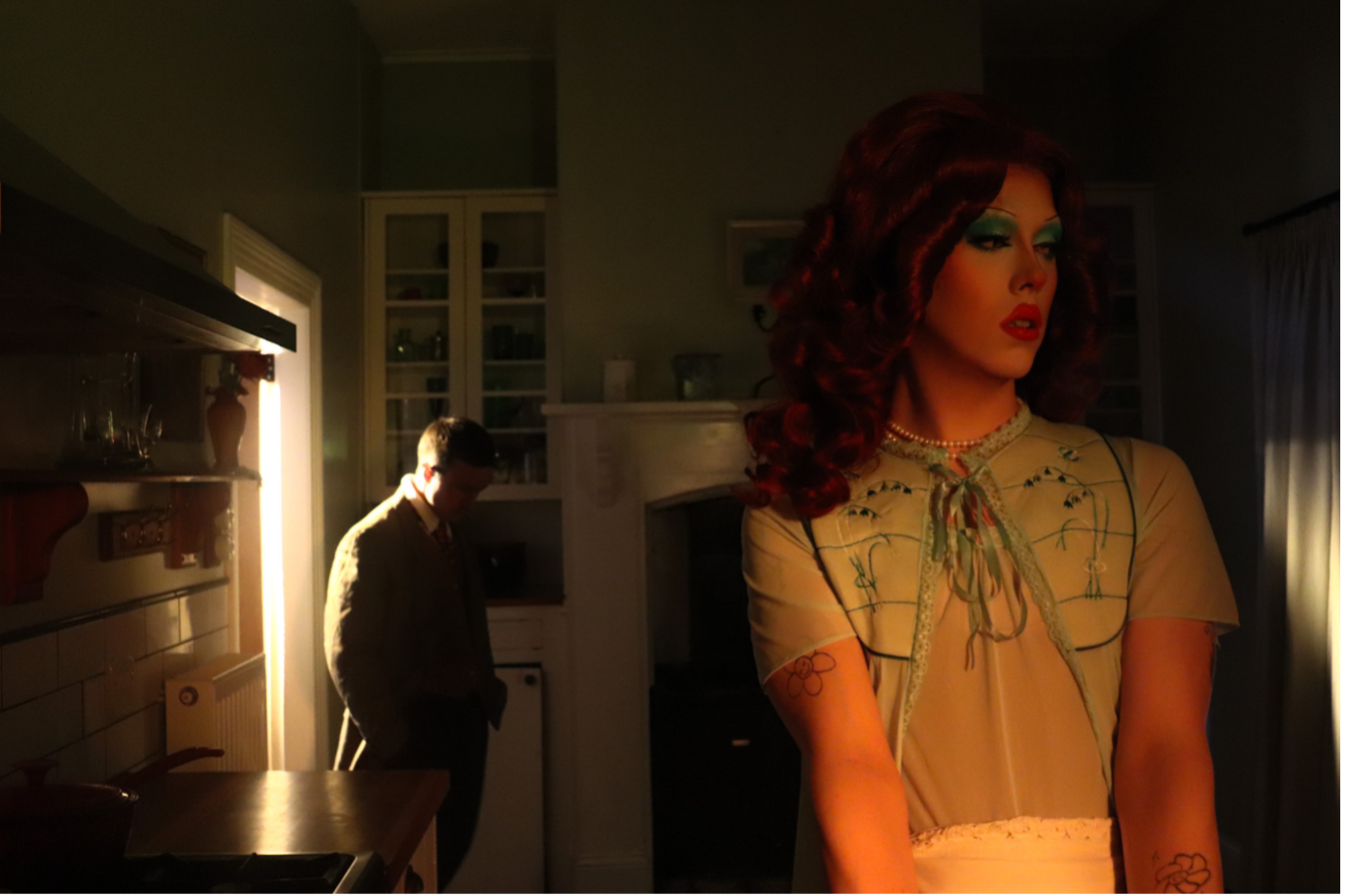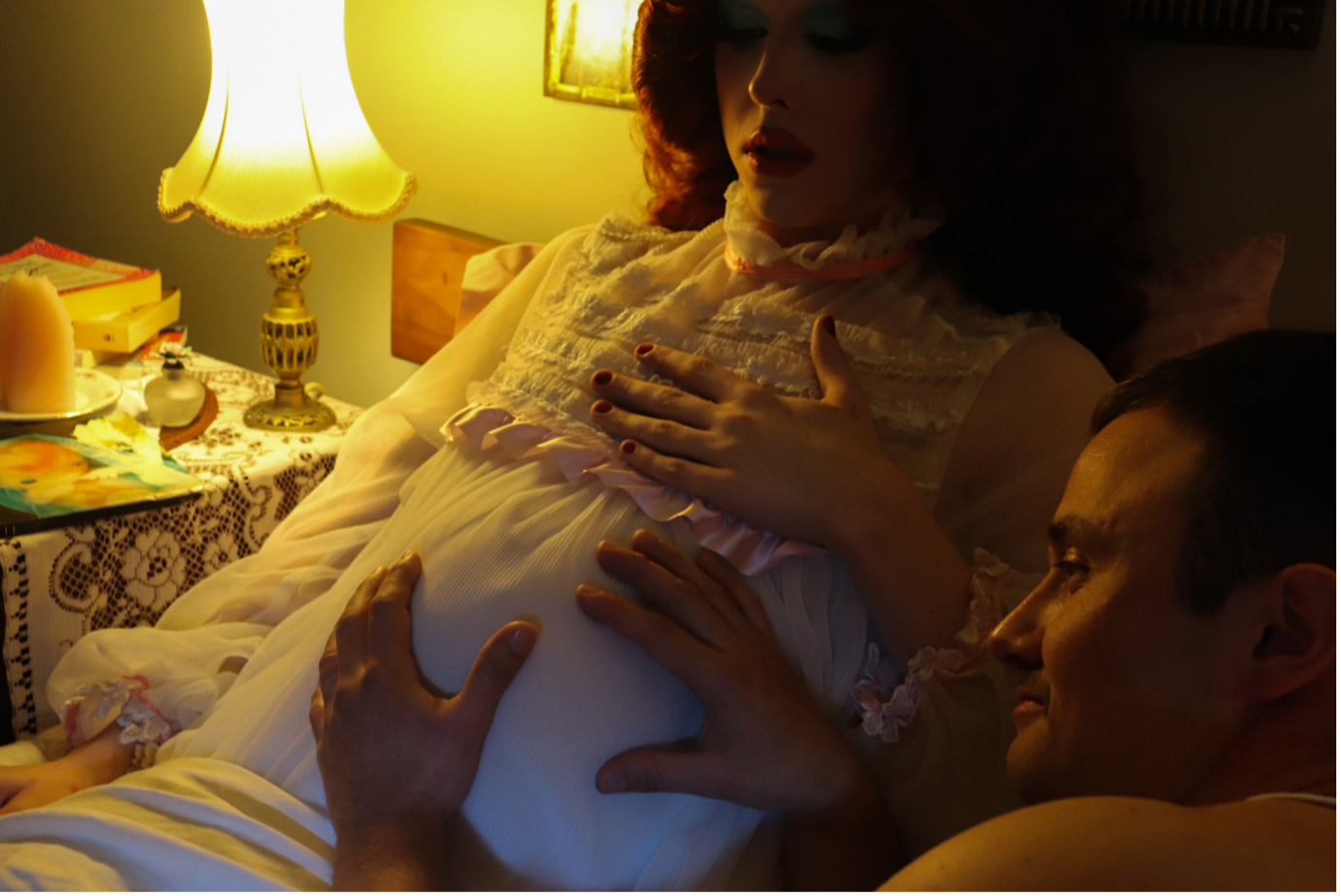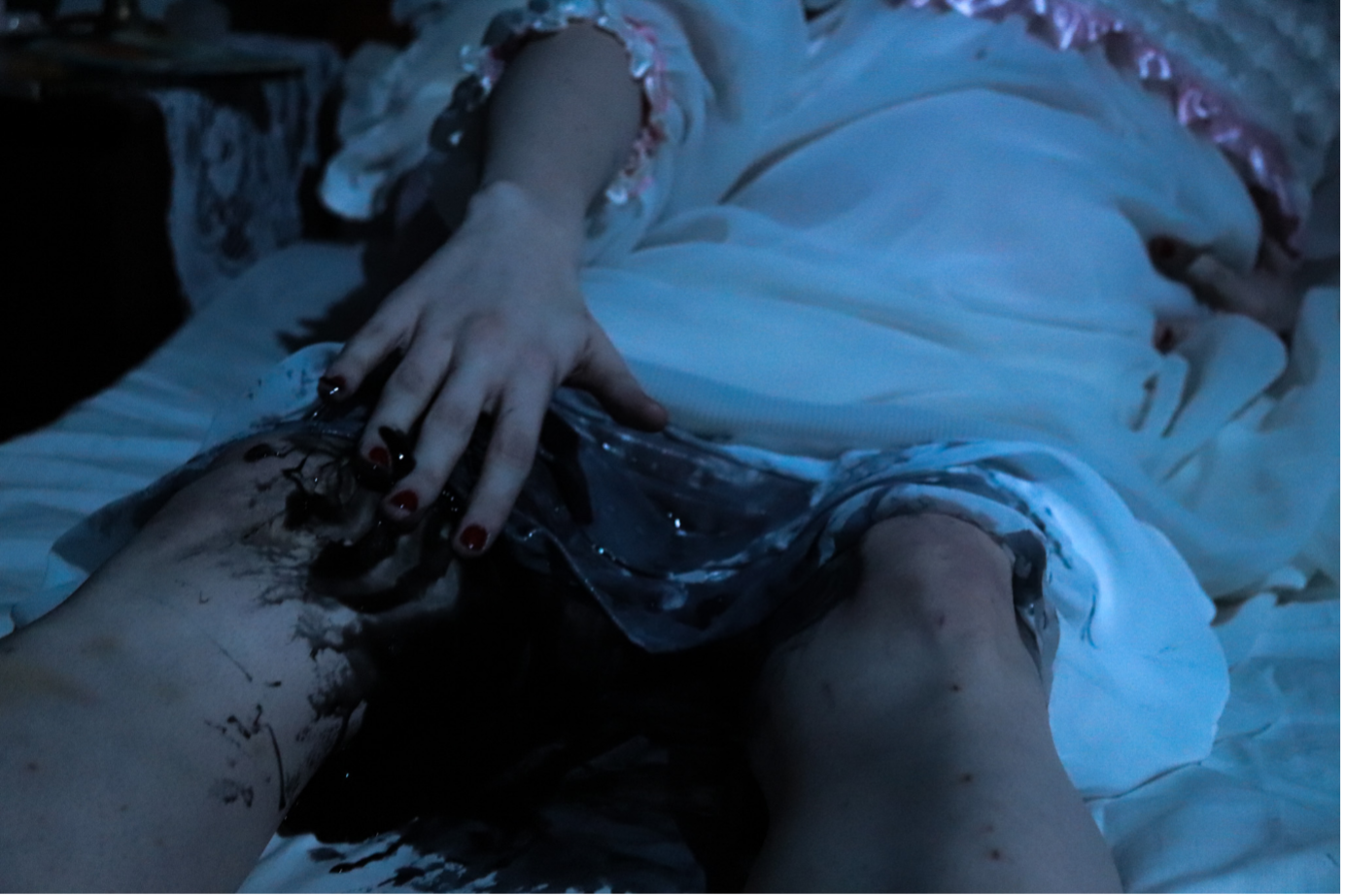Over*Flow: Trans Joy and Body Horror in Emerging Trans Cinema
Paige Macintosh / Te Herenga Waka—Victoria University of Wellington

From Jared Leto’s painfully ostentatious work in Dallas Buyers Club to Scarlett Johansson’s (thankfully) cancelled biopic Rub & Tug, trans casting debates dominated trans media discourse in the 2010s. And while comments from industry insiders like Guy Pearce keep bringing that discourse back to life, the 2020s seem to herald a new era of trans media making. Rather than waiting for a chance to perform in established cis filmmakers’ ‘vision’ of trans media, trans creatives in 2023 are writing, producing, and directing their own radical film projects financed through crowdfunding sites like Indiegogo and Boosted. Many of these projects are still in production or pursuing festival distribution—including the subject of this article—but the precarious nature of film industries means their distribution isn’t always certain. In spite of this ambiguity, work like Willem Koller’s Nest, a short film from Aotearoa New Zealand currently pursuing festival distribution, is worthy of critical discussion inasmuch as they speak to emerging trends in trans media culture—in this case, the prevalence of trans body horror within a new era of independent trans cinema.
Thanks to work by trans scholars and film critics—not to mention Sam Feder’s critically acclaimed documentary Disclosure (Sam Feder, 2020)—trans cinema’s long and problematic history is widely known. But while we’re seemingly past the days of psychotic trans killers and vomit-inducing genital reveals, tragedy continues to colour media depictions of trans experiences. The supernaturally tragic trans figure is forever subject to humiliation, hardship, dysphoria, and transphobic violence. In these films (think Eddie Redmayne’s overwrought performance in The Danish Girl or Jared Leto’s Oscar-winning caricature of trans femininity in Dallas Buyers Club) transness is a source of emotional devastation, an unwieldy curse that condemns the trans subject to a life of misery. There is no community, no joy, no hope for these miserable figures who, more often than not, pay for their gender transgressions with their life.
These films—almost always produced, written, and directed by cis creatives—attempt to ‘humanise’ trans people for cisgender audiences by soliciting pity. The trans body therefore becomes a site of trauma and visceral dysphoria centred (typically) on trans women’s genitals. As Cáel Keegan argues in ‘Moving Bodies,’ “in both medical and fictional literature, transgender identity has been sutured to specific forms of negative affect – rage, sorrow, wishfulness, denial.”[1] This negative framing extends beyond media depictions to colour trans scholarship itself, what Stef Shuster and Laurel Westbrook call trans studies’ “joy deficit.”[2] Yes, being trans in cisnormative society can be painful, challenging, and even dangerous, but our identity and culture are not solely defined by tragedy. Which begs the question, where can we see trans joy on our screens? Where can we see a celebration of trans communities, identities, and experiences? And how might these films speak to trans embodiment without evoking tired transition tropes?
The answer to these questions is in emerging media written, directed, performed, and produced by trans creatives outside of mainstream cinema markets. Nest, a short film written and directed by Willem Koller and produced with support from Te Herenga Waka—Victoria University of Wellington, had its first screening for family, friends, and supporters on October 11th, 2023. Written, directed, designed, and performed by a mostly trans and queer crew (with, as Koller acknowledged in his introduction, the support of token cis producer Dean Hewison), Nest is a delightfully absurd and surprisingly visceral depiction of the catharsis that accompanies gender transition. As the film’s Boosted campaign states, Nest uses “pregnancy horror as a metaphor for the feeling of being forced to come to terms with something that is growing inside of you, something inexorable.” And with its atmospheric sound design and visceral special effects, it absolutely delivers on this premise.

The best way I can describe Nest is like a camp kiwi crossover of David Lynch’s Eraserhead, Alison Maclean’s Kitchen Sink, and John Waters’ Pink Flamingos. Featuring the always delightful Elz Carrad (Rūrangi) and local drag performer Blink Bogan as a pair of expecting parents (listed in the credits as ‘Father’ and ‘Mother’), Koller’s script speaks to that terrifying first stage of transition—coming out to yourself. Mother’s difficult pregnancy evokes feelings of alienation, shame, and denial, but filtered through Blink’s camp rendition of femininity (the drag make-up is always flawless, even as she vomits black sludge into the kitchen sink) these feelings are drained of their traumatic potential so that the film can celebrate, in all its absurdist glory, the cherished bond between mother and… whatever it is that eventually comes out of her body. Because the ‘children’ produced through the union of Mother and Father’s hyper-gendered performances are something entirely new. Their messy ‘coming out’—featuring truly disturbing amounts of sticky black goo—is less ‘gender reveal’ than ‘monster surprise.’
Mother’s campy performance illustrates how body horror challenges assumptions about normative bodies. As Jolene Zigarovich argues in Transgothic in Literature and Culture, horror modes like the trans gothic problematise gender by divorcing it from sexuality and the lived body; in these works, the ‘natural’ order is undermined and social boundaries transgressed, drawing attention to deep-seated cultural anxieties about the inherent instability of the gender binary.[3] Mother’s heightened femininity, rendered through drag make up and an exaggerated 1950s housewife aesthetic, stand in stark contrast to the gushing black bile that erupts from her body. The violent birth sequence is an uncanny reproduction of childbirth that undermines normative assumptions about pregnancy and motherhood. Much like Susan Stryker, Koller embraces monstrous bodies as analogous to trans embodiment. Both place the subject “in an unassimilable, antagonistic, queer relationship to a Nature in which it must nevertheless exist.”[4]
The ‘children’s’ transformation is not complete by the end of the film (transitions never are), but the audience is not privy to the next stage of metamorphosis. Instead, Nest embodies the surreal and visceral (good and bad) experiences of early transition. The horror here is decidedly tongue-in-cheek (the screening I attended was filled with cackles and cheering) and gives way to a deeply felt catharsis. Transition, like childbirth, can be messy, painful, and terrifying (hello, second puberty). But it’s also absurd, playful, and hilarious. The weird and wonderful merge here so that a new form of embodiment might be born, one not necessarily bound by the limitations of gender. Watching Nest, it’s clear that this is the kind of film trans people deserve. Trans people deserve fun, trans people deserve whimsy, and most importantly, trans people deserve a drag queen giving birth to monster eggs in the middle of the night.

Koffer’s film offers something sorely missing from mainstream trans production: a joyful and playfully absurd exploration of trans experience. While his work encompasses genres (like body horror) that audiences might typically associate with misery or trauma, this doesn’t mean these genres are joy-less. On the contrary, horror stories offer a fantastic exploration of other worlds and a physical thrill for horror fans. The on-screen trauma in a slasher film, for example, does not translate into a traumatic viewing experience for viewers who love the genre. In the same vein, Nest’s cathartic rendering of trans embodiment elicits laughs as often as it elicits gasps. When enacted in this context, trans joy becomes a transgressive act that destabilises cultural and scholarly assumptions about trans life.
There is something truly extraordinary about sitting in a theatre full of young trans and queer people on a chilly Wednesday night, waiting in delighted anticipation for a short film made by and for trans people, a film by and for our community. Feelings of camaraderie and pride were palpable in the theatre that night. An opening performance by Blink (to Beyonce’s iconic ‘Freakum Dress’) was a clear sign that this wasn’t your typical film screening. Shimmying across the stage in an extraordinarily skimpy nightgown, Blink’s rambunctious energy was matched by the crowd—determined to make up for the theatre’s unflattering lighting with cheers and applause. Nest might not be everyone’s cup of tea, but it speaks to new and exciting impulses in trans media—an era of trans media making invested in trans embodiment.
Image Credits:
- Blink Bogan and Elz Carrad as Mother and Father (Image provided by filmmakers. Credit: Willow Heron).
- Expecting parents (Image provided by filmmakers. Credit: Willow Heron).
- Pregnancy horror (Image provided by filmmakers. Credit: Willow Heron).
- Keegan, Cáel. ‘Moving Bodies: Sympathetic Migrations in Transgender Narrativity,’ Genders 57 (2013): 2. [↩]
- Shuster, Stef and Laurel Westbrook. “Reducing the Joy Deficit in Sociology: A Study of Transgender Joy.” Social Problems (2022). [↩]
- Zigarovich, Jolene. “Introduction: Transing the Gothic.” TransGothic in Literature and Culture, Routledge (2018): 1-22. [↩]
- Stryker, Susan. “My Words to Victor Frankenstein Above the Village of Chamounix: Performing Transgender Rage.” GLQ: A Journal of Lesbian and Gay Studies 1, no. 3 (1994): 243. [↩]